#becky lefevre
Text
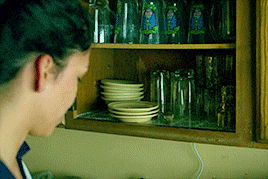




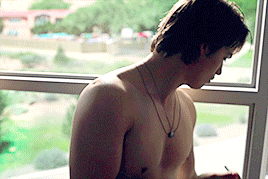



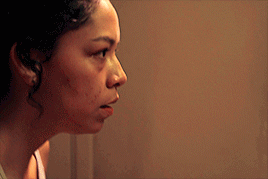
chambers (2019) | episode one: "into the void"
"what happened to your heart?"
"it stopped."
"at seventeen?"
"i'm an old soul, what can i say?"
#chambersedit#chambers#sasha yazzie#elliot lefevre#frank yazzie#yvonne perkins#becky lefevre#cheddar the adorable mouse#i want it on record that i behaved myself and only included one gif from sasha and elliot's scene in the kitchen#anyway i love one (1) weird netflix show that deserved another season#yes i am doing all ten episodes no i do not take comments or criticisms#also i hated coloring the kitchen scene christ on a crutch#anyway.
36 notes
·
View notes
Text





i don’t know. sometimes i can even…feel her.
CHAMBERS, SERIES ONE (2019)
#flashing /#something about the tether between sasha becky elliot#chambers#chambersedit#horror#horroredit#sasha yazzie#sivan alyra rose#lillayareidedit#elliot lefevre#nicholas galitzine#becky lefevre#lillaya reid#ngalitzineedit#sivanalyraroseedit#m*#chambers*#so… adoptive triplets anyone?
12 notes
·
View notes
Note
Weird request, but do you have any faceclaims that are gingers? It's so hard to find ginger faceclaims of different ethnicities, body types, etc.
Hey anon! I’m not sure if you only wanted diverse faceclaims only but below are 200+ ginger faceclaims and I have noted the diverse suggestions. Please let me know if you’d like more specific suggestions for example from a certain age range.
Big thanks to @katherine-mcnamara!
Non-binary:
Nicky Endres (1982) Korean - non-binary, transfeminine, genderqueer and queer - they/she.
Olly Alexander (1990) - non-binary and gay - he/him.
Kaitlyn Alexander (1992) - non-binary - they/them.
Maggie McGill (?) - is non-binary, queer and fat/plus size- she/they,
Women:
Joy Behar (1942)
Sondra Currie (1947)
Becky Ann Baker (1953)
Kay Adshead (1954)
Julianne Moore (1960)
Carol Alt (1960)
Andrea Arnold (1961)
Marcia Cross (1962)
Cheryl Hawker (1962) - is fat/plus size.
Amy Yasbeck (1962) Lebanese / Irish.
Kate Walsh (1967)
Molly Ringwald (1968)
Debra Messing (1968)
Catherine Tate (1969)
Stephanie Belding (1971)
Brigid Brannagh (1972)
Nathalie Boltt (1973)
Alyson Hannigan (1974) Ashkenazi Jewish / Irish.
Amy Adams (1974)
Tina Campbell (1974) African-American.
Alicia Witt (1975)
Jen Richards (1976) - is trans and bisexual.
Isla Fisher (1976)
Lauren Ambrose (1978)
Natasha Lyonne (1978) Ashkenazi Jewish.
Itziar Castro (1977) - is a lesbian.
Jaime Ray Newman (1978) Ashkenazi Jewish.
Rachelle Lefevre (1979)
Ruth Connell (1979)
Nur Fettahoğlu (1980) Turkish.
Sarah Drew (1980)
Bridget Regan (1982)
Bronagh Waugh (1982)
Lotte Verbeek (1982)
Alexandra Breckenridge (1982)
Kate Mara (1983)
Tuğçe Kumral (1983) Turkish.
Lynsey Bartilson (1983) Ashkenazi Jewish / Norwegian, Dutch, mix of English, Irish, and French.
Magda Apanowicz (1985)
Emily Beecham (1985)
Deborah Ann Woll (1985)
Natalya Rudakova (1985)
Sarah Power (1985)
Our Lady J (1985) - is trans.
Mary Wiseman (1985) - is queer.
Sepideh Moafi (1985) Iranian.
Elçin Sangu (1985) Turkish.
Issa Rae (1985) Senegalese / African-American, Creole [African, French, distant Spanish], distant French-Haitian.
Katie Leclerc (1986) - has Ménière’s Disease.
Florence Welch (1986)
Laura Spencer (1986)
Gillian Alexy (1986)
Crystal Kay (1986) Korean / African-American,
Valorie Curry (1986)
Jessica Keenan Wynn (1986)
Sarah Snook (1987)
Evan Rachel Wood (1987) - is bisexual.
Genevieve Angelson (1987)
Nicola Coughlan (1987) - is fat/plus size.
Elena Satine (1987)
Sarah Hay (1987)
Stacey Farber (1987)
Christiane Seidel (1988)
Maggie Geha (1988)
Amber Skye Noyes (1988)
Sabina Karlsson (1988) Gambian / Swedish.
Renee Olstead (1989)
Jessica Kellgren-Fozard (1989) - has Ehlers-Danlos syndrome with Marfanoid phenotype causing blindness in one eye and deafness - is a lesbian.
Clémentine Desseaux (1988) - is fat/plus size.
Jane Levy (1989) Ashkenazi Jewish / English, some Irish and Scottish.
Jessie Buckley (1989)
Renee Olstead (1989)
Jenna Thiam (1990) Armenian, Belgian / Senegalese, English, French.
Lee Sung Kyung (1990) Korean.
Galadriel Stineman (1990)
Başak Gümülcinelioğlu (1991) Turkish.
Coral Kwayie (1991) Ghanaian / British.
Carmen Solomons (1991) Mixed South African.
Su Kutlu (1991) Turkish.
Charlotte Spencer (1991)
Colby Minifie (1992)
Alina Kovalenko (1992)
Eleanor Tomlinson (1992)
Haley Ramm (1992)
Alexis Jordan (1992) African-American / Puerto Rican.
Anna Shaffer (1992) Black and White South African / South African Jewish.
Louisa Connolly-Burnham (1992)
Jennifer Stone (1993)
Mayra Tercero (1993) Honduran.
Olivia Cooke (1993)
Molly Quinn (1993)
Freya Mavor (1993)
Sharon Belle (1993)
Molly C. Quinn (1993)
Thiều Bảo Trâm (1994) Vietnamese.
Janet Devlin (1994) - is bisexual.
Ahsen Eroğlu (1994) Turkish.
Madelaine Petsch (1994)
Jacqueline Emerson (1994)
Bronwyn James (1994) - is gay and fat/plus size.
Khadijha Red Thunder (1994) Chippewa Cree, African-American, Spanish - is pansexual.
Marina Ruy Barbosa (1995) Brazilian.
Aleece Wilson (1995) Metis, Afro-Canadian, Irish and Italian.
Ciara Baxendale (1995)
Phoebe Dynevor (1995)
Bree Kish (1996) 1/4 African-American 3/4 Spanish, Irish, Dutch - is fat/plus size.
Thanaerng Kanyawee Songmuang (1996) Thai.
Luca Hollestelle (1996)
Sue Ramirez / Sue Dodd (1996) Filipino / White.
Katherine McNamara (1996)
Thanaerng Kanyawee Songmuan (1996) Thai-Chinese.
Sierra McCormick (1997)
Toto Bruin (1997)
Ellie Bamber (1997)
Sydney Sierota (1997)
Bo Barah (1997)
Maddison Brown (1997)
Melis Sezen (1997) Turkish.
Kiera Allen (1997) - is paraplegic.
Jordana Beatty (1998)
Annalise Basso (1998)
Erica Gluck (1998) African-American, possibly other.
Sonny Turner (1998) Black British.
Mathilda Mai (1998)
Duda Brandão (1998) Brazilian.
Cheng Xiao (1998) Chinese.
Fujita Nicole (1998) Japanese / Polish, Russian.
Erin Kellyman (1998) Afro-Jamaican / Irish - is a lesbian.
Emma Kenney (1999)
Juliette Angelo (1999)
Ellie Darcey-Alden (1999)
Julia Lester (2000) Jewish.
Kennedy Walsh (2000)
Mina Sundwall (2001)
Talia Jackson (2001) African-American / White.
Alana Pancyr (?)
Lynley Eilers (?) - is fat/plus size.
Men:
William Atherton (1947)
David Caruso (1956)
Boris Becker (1967)
Tom Goodman-Hill (1968)
Morgan Alling (1968)
Toby Stephens (1969)
Tony Curran (1969)
Eric Johnson (1970)
Brendan Beiser (1970)
Zack Ward (1970)
Michael Rapaport (1970) Ashkenazi Jewish.
Alan Tudyk (1971)
Anthony Rapp (1971)
Damian Lewis (1971) Welsh, English, Scottish, and 1/16th Jewish [Sephardi and Ashkenazi].
Scott Grimes (1971)
Michael C. Hall (1971) - has stated he’s “not all the way heterosexual.”
Brett Tucker (1972)
Ewen Bremner (1972)
Kevin McKidd (1973)
Mackenzie Astin (1973)
Kris Holden-Ried (1973)
Dash Mihok (1974) - has Tourette Syndrome.
Michael Shannon (1974)
Seth Green (1974) Ashkenazi Jewish.
Jesse Tyler Ferguson (1975) - is gay.
Marc Menchaca (1975)
David Lewis (1976)
Krondon (1976) African-American - has albinism.
Kristofer Hivju (1978)
Diego Klattenhoff (1979)
Ethan Cohn (1979)
Ben Foster (1980) Ashkenazi Jewish / English, French, Irish, distant Welsh and Scottish (mother; who may have converted to Judaism).
Sam Heughan (1980)
Rolf Kristian Larsen (1983)
Jidenna (1985) Igbo Nigerian / English, German, Dutch.
Alex Saxon (1987)
Kerem Bürsin (1987) Turkish.
Rupert Grint (1988)
Chris Bylsma (1988)
Luke Newberry (1990)
Alan Ashby (1991)
Calum Worthy (1991)
Elijah Baker (1991) Black British and White.
Stephen Joffe (1991)
Sean Berdy (1993) - is deaf and has bipolar disorder.
Cameron Monaghan (1993)
Niall Cunningham (1994)
Jack Kilmer (1995)
Elliott Jay Brown (1996) Black British.
Ralph Souffrant (1996) Afro-Haitian.
Iwahashi Genki (1996) Japanese.
Leon Seidel (1996)
Yoshino Hokuto (1997) Japanese.
Garet Allen (1997)
Kai Alexander (1997)
Jake Austin Walker (1997)
Louis Hofmann (1997)
Tashi-Jay Kwayie (1998) Black British.
Justin Tinucci (1999)
Gytis Gedvilas (1999)
Tucker Albrizzi (2000) - is fat/plus size.
Pierre Sekongo (2000) Ivorian / French.
Thomas Barbusca (2003)
Stacey Edward (?) African-American.
93 notes
·
View notes
Photo
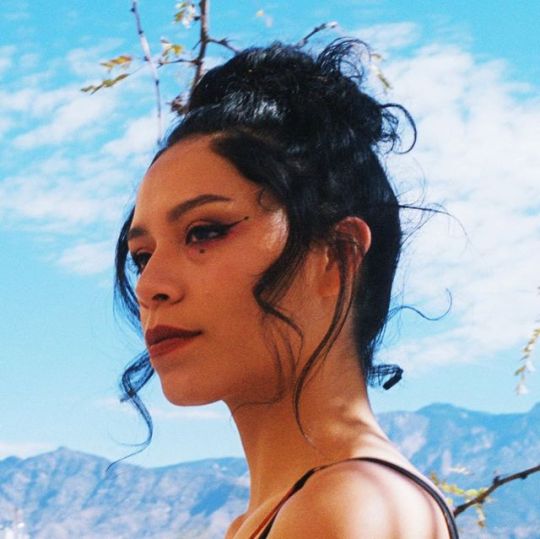
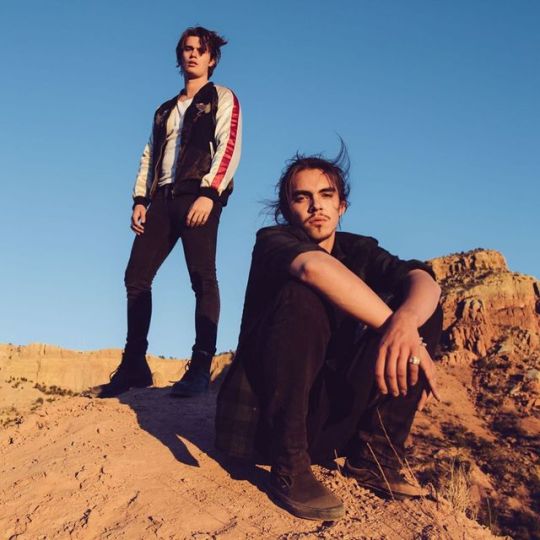

What's it like working with the cast of Chambers? Lead Sivan Alyra Rose shared they are "the most hardworking and lovely people [she has] ever met." Photos from the cast's epic road trip in New Mexico where the show was filmed.
#photos#chambers#chambers netflix#netflix chambers#sivan alyra rose#sasha yazzie#nicholas galitzine#elliott lefevre#elliot lefevre#griffin powell-arcand#tj locklear#kyanna simone simpson#lilliya scarlett reid#becky lefevre#lilli kay#penelope fowler#sarah mezzanotte#marnie
566 notes
·
View notes
Video
youtube
Elliott Lefevre | Paralyzed (+1x10)
17 notes
·
View notes
Text
Recently rewatched the first episode of BWOC on YouTube, when will our precious show be available on streaming platforms? Never? Oh. Ok. Cool. Well just keep watching low quality tv recordings on YouTube.
#bwoc#rachelle lefevre#brandon quinn#becky dingle#stacey hanson#merton j dingle#lori#stacy#werecat#big wolf on campus
20 notes
·
View notes
Text
temp muse list:
ORIGINAL CHARACTERS
BAILEY SCOTT (the 100) (fc: maya hawke)
BARRY DARNELL (stranger things oc) (fc: logan miller)
CANDY CARTER (stranger things) (fc: erin sanders)
CHRISSY BECKETT (yellowjackets) (fc: sydney sweeney)
DOLLY JAMES (fandomless) (fc: maya hawke)
DRAVEN VALENTINE (ahs coven/apocalypse) (fc: max green)
ELLIE BECKETT (yellowjackets) (fc: sydney sweeney)
EMMY CARTER (stranger things) (fc: sheri moon zombie)
FLYNN MYERS (fandomless) (fc: joe keery)
KATIE DARNELL (stranger things) (fc: olivia welch)
LENNON MADDOX (fandomless) (fc: alycia debnam carey)
LISA SLADE (stranger things) (fc: scout taylor compton)
LYRIC MCCALISTER (yellowjackets) (fc: nicholas alexander)
MARS NEWMAN (yellowjacket) (fc maya hawke)
MAX SLADE (stranger things) (fc: timothée chalamet)
ROWAN TAYLOR (twd/ftwd) (fc: odessa a'zion)
SHELL EMERY (siren) (fc: maya hawke)
STARLA MYERS (fandomless) (fc: natalia dyer)
SKYLAR JONES (fandomless) (fc: maya hawke)
WISTERIA LACHLAN (ahs coven/apocalypse) (fc: maya hawke)
CANON CHARACTERS
ALICE CANADY (yes, god, yes | 2020 movie)
AMY ANDERSON (adult world | 2013 movie)
BELLE WALKER (amityville: the awakening | 2017 movie)
BROOKE THOMPSON (ahs | s9 1984)
CHET CLANCY (ahs | s9 1984)
JIMMY DARLING (ahs | s4 freak show)
MADISON MONTGOMERY (ahs | s3 coven)
MAGGIE ESMERELDA (ahs | s4 freak show)
CASEY GARDNER (atypical)
BRYNN MCNALLY (broken things | novel | lauren oliver fc: sophie thatcher)
NANCY LEFEVRE (chambers)
HEATHER WATKINS (fear street 1994 | 2021 movie)
ALICIA CLARK (fear the walking dead)
MADISON CLARK (fear the walking dead)
JOEY DEL MARCO (grand army)
CHLOE PRICE (life is strange) (animated or live fc: sophie thatcher)
LENA HALOWAY (delirium books | lauren oliver fc: emma roberts)
MAX CAULFIELD (life is strange) (animated or live fc: maya hawke)
RACHEL AMBER (life is strange) (animated or live fc: emma roberts)
JO MARCH (little women novel & movie | mainly modern verse)
RAY HALL (panic)
TRENTON WALKER (rooms | novel | lauren oliver fc: dylan arnold)
BROOKE MADDOX (scream the series)
JILL ROBERTS (scream 4 | 2011 movie)
KURT KUNKLE (spree | 2020 movie)
BILLY HARGROVE (stranger things)
CAROL PERKINS (stranger things)
STEVE HARRINGTON (stranger things)
TAMMY THOMPSON (stranger things) (canon based oc)
LEXA (the 100)
EDDIE ‘RAGMAN’ WEINBAUER (trick or treat | 1986 movie)
FRANKIE CROYDEN (tuff turf | 1985 movie)
BECKY MONROE (when the streetlights go on | 2020 movie)
JACKIE TAYLOR (yellowjackets)
EXCLUSIVES:
BEN MILLER (escape room 1&2 | 2019 movie)
CHARLES LEE RAY / CHUCKY (childs play)
SHANE MCCUTCHEON (the l word/generation q)
TATE LANGDON (ahs | s1 murder house)
2 notes
·
View notes
Text
『 nancy lefevre : @goxinsane 』
send ‘word’ and i’ll write a thing using this generator! // accepting
based on this ask: ‘word’ (to Nancy from Lillian!)

Two words. That's what Nancy had for Lillian. "No way." She slurred. It wasn't even two in the afternoon and Nancy was intoxicated. It didn't matter much to her. It was bliss and the only thing that got her through most days. Her husband referred to it as 'waltzing through life in a Chardonnay haze' - and maybe she was but it was the only damn thing that helped. He sure as hell didn't. Not anymore at least. Their marriage was just for show these days. Anything they did have fell apart at the seems when Becky died. "It might have helped you with Waverly." Nancy had been as supportive as she could be during that time but she'd never expected that she'd be going through this herself. She didn't know how to take the help in return. "But I can't...I can't go to one of those..." She struggled for the words. "Sad places." That was the best way to describe it. "And talk about my grief with strangers. And Ben would never go." The afternoon lunch was proving to be more difficult than Nancy had expected. She did nothing these days and even that exhausted her.
#goxinsane#『 nancy lefevre : interactions 』#『 nancy x lillian 』#『 💧 : all ic answered 』#『 💧 : triggering content 』#『 nancy x lillian (word generator meme ) 』
1 note
·
View note
Photo


elena lima / 24 / she-her / youtuber, beauty guru / soul of aphrodite / bianca santos

Since you were a little child, you heard your mother talking about only one thing; marriage. It even came as a surprise to you when you started making friends around town, to realise their families weren’t as conservative and matrimony oriented like yours was. Nonetheless, you didn’t question it. You knew it wasn’t going to be difficult to find yourself a husband. You are gorgeous and charming, four times chosen local beauty queen during carnival week. You were always told your beauty was what was going to take you places; and you learned to live by those words, like a mantra. You loved the smile on your mother’s face when you told her you were going to beauty school after graduation; and you enjoyed the warm feeling that came with your entire family hugging you when you confessed you had been in a relationship with your best friend Brenton for months now; and that you thought you were surely going to marry some day soon. By giving them everything they wanted, it seemed like you had it all as well.

pynk - janelle monáe
blow your mind - dua lipa
sin pijama - becky g & natti natasha

You fell in love with being a makeup artist - a kind of feeling that nothing else in your life was giving you after some time. You felt trapped in your relationship, but didn’t really blame it on Brenton. Your boyfriend has always been so good to you, and still is. It’s not Brenton’s fault that you - who can’t help but being a creature of romance - never got to truly learn the meaning of love and companionship. Slowly but surely, your life started to change. First you met Aaron, and from you were captivated immediately. It’s a new experience, so different and unconventional, one that sweeps you off your feet. You know what you’re doing is wrong, but somehow it feels right. Then there is YouTube. Your make up tutorials started out as a joke, but in the last two weeks you have actually hit one million subscribers on your channel "Limamua” and you also have over two million followers on your other social media profiles. You’ve even been invited by some sponsors to a meeting in New York city. You just have to figure out how to tell your family about this whole thing.

Rhiannon Hébert, Naia Guerrero: Best friends, confidants
Brenton Lefevre: Boyfriend, potential fiance
Nina Campbell: Sees potential in, social media friend
Aaron Gunvaldsson: Affair, lover
Logan Parrish, Pietro da Costa: Close friends
Daniela Arevalos: Makeover project
6 notes
·
View notes
Link
When International Monetary Fund Managing Director Christine Lagarde goes to the G8 summit in June, she may well be wearing a scarf – a fashion accessory that she’s become known for, and one that’s been drawing more and more attention. In fact, the BBC recently identified scarves as a “new power symbol” for women.
True, just as some men choose amusing neckties to enliven monochrome suits, many women who work in an atmosphere that requires conservative business apparel will wear scarves to add a fillip of color and distinction.
But the trend is anything but “new.” In looking at the history of scarves in the 19th and 20th centuries, it’s clear that the allure and power of scarves has always existed – and persists.
A single piece of cloth
The scarf is the most simple form of adornment: a single piece of cloth. For this reason, it’s one of the most versatile clothing accessories, used for centuries across a variety of cultures, for a range of purposes.
Many Muslim women wear headscarves for modesty, while ladies of a certain age favor scarves with a triangular fold to protect expensive or elaborate coifs.

Votes for Women: the scarf as a political statement. © Victoria and Albert Museum, London.
A scarf can be a political statement, and can denote a wearer’s affiliation or beliefs. Early 20th-century crusaders for women’s rights used their clothing to promote their cause, wearing scarves in the movement’s colors: white, green and purple.
During World War II, scarves expressed nationalist sentiments. The British firm Jacqmar produced designs with propaganda-themed slogans. One featured the phrase “Shoulder to Shoulder” on a map of England emblazoned with British and American symbols. Another design mimicked a wall covered with posters urging citizens to “Lend to Defend” and “Save for Victory.”
An elegant fashion
But in Western culture, the scarf is most prominently known for its use as a fashion accessory, one that first gained widespread popularity in the 19th century.

The fichu was a predecessor to the scarf. Wikimedia Commons
The fichu is a typical 18th- and 19th-century style that can be seen as the forerunner of modern scarves. A piece of fabric worn lightly draped on the upper chest and usually knotted in front, it provided modest covering but was also an opportunity to add an especially fine textile – sometimes lace edged or embroidered – to an ensemble.
Lightweight, finely woven silk and cashmere shawls from India were one of the first fashionable scarf styles. Empress Joséphine – the first wife of Napoleon – had an extensive collection (thanks to her husband’s travels), and the style persisted through much of the 19th century, spawning cheaper imitations fabricated in other parts of Europe, notably France and Paisley, Scotland.
Status symbols
Like much of high fashion, scarves can signal one’s status, and limited edition scarves – often only made available to favored customers – can act as specific indicators for those in the know.
For example, fashion houses send scarves, often during the holidays, as thank-yous to loyal clients. Those produced by Parisian couturiers during the 1950s were especially chic, often designed with sketches of the maison; others displayed printed patterns in the whimsical, painterly style of the era.

The House of Dior would present scarves to its regular customers as a token of gratitude. © 2000–2015 The Metropolitan Museum of Art. Gift of Mrs. Michael Blankfort, in memory of her mother, Mrs. William Constable Breed, 1976
And from the 1950s into the 1970s, the famed Manhattan eating and drinking establishment 21 produced a series of annual scarves and sent them to favorite “regulars.”
The restaurant’s owners commissioned well-known designers, and each year’s scarf design referred to some aspect of the restaurant – its famous façade, the collection of jockey statues outside or the number 21.
Actress Lauren Bacall, an esteemed regular, donated her 21 scarves to the Museum at New York’s Fashion Institute of Technology, where other pieces from her wardrobe were recently exhibited.
A canvas for experimentation
As a discrete space, a scarf presents an opportunity for experimentation often not available in other realms of dress that are determined – and restricted – by the shape of the body.
In London in the 1940s, Lida and Zika Ascher initiated their “Artist Squares” project, enlisting an international roster of prominent artists to design large scarves, a group that included Henri Matisse, Jean Cocteau and Henry Moore.
The Artist Squares were sold in major department stores and also exhibited – framed, like paintings – at London’s Lefevre Gallery.
To celebrate her new couture salon in 1935, the designer Elsa Schiaparelli made a collage of her press clippings and had it printed as fabric for scarves and other accessories, turning black and white type into a striking motif.
A scarf by the American designer Vera offers another variation on lettering as ornament, presenting the titles of international newspapers, each in its distinctive typeface, on a vivid yellow background.

A scarf by Vera, featuring newspaper typeface. © 2000–2015 The Metropolitan Museum of Art. Gift of Heather B. Babb, 1996
Hermès: The crème de la crème
Certain labels are particularly associated with high style in scarves. Ferragamo, Fendi and Gucci – all originally esteemed leather goods houses – now produce desirable scarves.
But for prestige and polish, Hermès represents the pinnacle of scarf culture. Several aspects of its business have contributed to the company’s reputation. Founded in 1837 as a supplier of equestrian supplies, Hermès began offering scarves, called carrés, in 1937.
Their focus on exclusivity has encouraged an almost fetishistic loyalty among customers, many of whom could more properly be termed “collectors.” Limiting the number of designs they offer each season has maintained Hermès’ mystique. The company’s focus on craftsmanship helps justify their reputation and high prices; Hermès takes pride in the impressive number of colors in each design, the hand-printing process and the fineness of their silk, positioning their output as artisanal creations.
A man demonstrates the intricate screen printing process of a Hermès scarf.
While not at the level of Hermès, the American accessories company Echo, founded in 1923, also has a loyal following. The firm pinpointed the essence of the scarf with their memorable ad campaign “The Echo of an Interesting Woman,” introduced in the 1970s.
In contemporary fashion, scarves continue to serve the same functions as those earlier fine linen fichus and paisley shawls; they denote connoisseurship and sophistication.
It’s no surprise, then, that sociologist and image consultant Anna Akbari makes “Put on a scarf” the first entry on her current list of “5 Simple Ways To Hack Your Image,” recognizing their potential for instant uplift and an infusion of individuality.
by Beth Daley
licensed from theconversation.com
Written by Becky Heldmen for Schmidt Clothing.
0 notes
Text



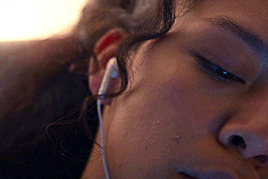

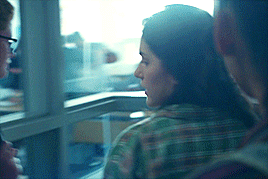




Chambers (2019) | episode two: "right to know"
"how about you just accept the fact that she saved your life and got you that scholarship and get on with it?"
"damn, 'vonne. really wish i could've packed for that guilt trip."
#chambersedit#chambers#sasha yazzie#elliot lefevre#tj locklear#yvonne perkins#penelope fowler#nancy lefevre#becky lefevre#does anybody care if my tags are that well organized? probably not.#but.#i'm being restrained and limiting myself to one (1) sasha and elliot gif per episode gifset#well okay. up until episode seven.#i can't not have multiple gifs of them then
34 notes
·
View notes
Link
Yes, it is possible to integrate yoga into your must-watch queue. Who says sinking into your couch isn’t self-care?
Tony Goldwyn in Chambers on Netflix
Chambers
Scandal fans know actor Tony Goldwyn as the charming leader of the free world. But with the April release of Netflix’s Chambers, the formerly buttoned-up bossman has entered full-on crystal-toting territory. As mourning father Ben Lefevre, Goldwyn leans on Kundalini breathing practices and shirtless meditations to cope with the loss of his teenage daughter, Becky. The supernatural thriller unravels the mysterious circumstances behind Becky’s death and the paranormal visions that result when another girl receives her heart in an emergency transplant. Even if bone-chilling television isn’t your thing, you may still appreciate Lefevre’s commitment to sage burning.
Michael O’Neill's On Yoga: The Architecture of Peace
On Yoga: The Architecture of Peace
If you haven’t yet seen this 2017 documentary based on photographer Michael O’Neill’s book of the same name, it’s time. O’Neill’s decade-long photographic exploration into the practice styles of world-renowned yoga masters resulted in the 2015 tome, which contains 200 photographs of famed yogis such as B.K.S. Iyengar and designer Donna Karan. The film depicts O’Neill’s behind-the-lens efforts to capture a diverse array of practitioners and features appearances from commentators Deepak Chopra and Elena Brower.
See also Light on Iyengar
Maris Degener in I am Maris
I am Maris
Few stories of struggling with mental health prove to be as uplifting as I am Maris: Portrait of a Young Yogi, a documentary that follows 17-year-old Maris Degener as she’s gripped by chronic anxiety and a near-fatal eating disorder. By the time she’d reached middle school, what had begun as generalized dread escalated to full-blown panic attacks, later mani-festing as cutting, purging, and other forms of self-harm. Rather than focus on the protagonist’s trauma, the film, which hit Netflix after a year on the festival circuit, thoughtfully explores Degener’s psychological, physical, and spiritual healing through yoga.
After becoming a licensed instructor at the age of 16, Degener began blogging about her journey and made national headlines for her outspoken blog posts and social media captions that aimed to destigmatize mental health issues. The doc offers an insightful peek into life in the midst of a psychological battle, and highlights the potential for beauty after pain. Bring tissues.
See also 1 in 5 Adults Live with Mental Illness. These Yogis Are Breaking the Stigma
Q+A with Maris
Maris Degener was just 17 when she starred in I am Maris. Here, the 21-year-old vinyasa flow teacher dishes on inclusivity in the yoga community, representation in the media, and new frontiers in her post-film life.
YOGA JOURNAL: How does it feel to see the film’s message resonate with people all over the world?
Maris Degener: It felt risky to make a film about eating disorders that didn't romanticize this disease with dramatic weight-loss pictures or anything like that, and I am proud to have stood by my intentions. I believe in the film deeply, but I’m now more aware of the importance of representation than I was when the film was made. My positionality is complicated. On one hand, the film accurately paints a very privileged picture of my life: I grew up in an affluent community and I had full access to medical treatment. But it didn’t show all of me. It didn’t tell the story of my family’s immigration from Mexico. It didn’t show me struggling with my sexuality.
See also 7 Truths About Eating Disorders Every Yoga Teacher Needs to Know
YJ: How has this experience shaped your teaching?
MD: I came out as a queer person last year. Yoga is, in large part, based on satya, or living your truth. To teach this, I must be honest with myself and the world about who I am. The yoga community in the West is often very homogenous—or portrayed that way. If I can be open about who I am and how I’ve come to accept all of myself, that may help others feel safe and welcomed into the practice. It allows me to be a stronger voice for those often not represented in the community.
See also 10 Powerful (and Empowering) Poses for Pride
0 notes
Link
Yes, it is possible to integrate yoga into your must-watch queue. Who says sinking into your couch isn’t self-care?
Tony Goldwyn in Chambers on Netflix
Chambers
Scandal fans know actor Tony Goldwyn as the charming leader of the free world. But with the April release of Netflix’s Chambers, the formerly buttoned-up bossman has entered full-on crystal-toting territory. As mourning father Ben Lefevre, Goldwyn leans on Kundalini breathing practices and shirtless meditations to cope with the loss of his teenage daughter, Becky. The supernatural thriller unravels the mysterious circumstances behind Becky’s death and the paranormal visions that result when another girl receives her heart in an emergency transplant. Even if bone-chilling television isn’t your thing, you may still appreciate Lefevre’s commitment to sage burning.
Michael O’Neill's On Yoga: The Architecture of Peace
On Yoga: The Architecture of Peace
If you haven’t yet seen this 2017 documentary based on photographer Michael O’Neill’s book of the same name, it’s time. O’Neill’s decade-long photographic exploration into the practice styles of world-renowned yoga masters resulted in the 2015 tome, which contains 200 photographs of famed yogis such as B.K.S. Iyengar and designer Donna Karan. The film depicts O’Neill’s behind-the-lens efforts to capture a diverse array of practitioners and features appearances from commentators Deepak Chopra and Elena Brower.
See also Light on Iyengar
Maris Degener in I am Maris
I am Maris
Few stories of struggling with mental health prove to be as uplifting as I am Maris: Portrait of a Young Yogi, a documentary that follows 17-year-old Maris Degener as she’s gripped by chronic anxiety and a near-fatal eating disorder. By the time she’d reached middle school, what had begun as generalized dread escalated to full-blown panic attacks, later mani-festing as cutting, purging, and other forms of self-harm. Rather than focus on the protagonist’s trauma, the film, which hit Netflix after a year on the festival circuit, thoughtfully explores Degener’s psychological, physical, and spiritual healing through yoga.
After becoming a licensed instructor at the age of 16, Degener began blogging about her journey and made national headlines for her outspoken blog posts and social media captions that aimed to destigmatize mental health issues. The doc offers an insightful peek into life in the midst of a psychological battle, and highlights the potential for beauty after pain. Bring tissues.
See also 1 in 5 Adults Live with Mental Illness. These Yogis Are Breaking the Stigma
Q+A with Maris
Maris Degener was just 17 when she starred in I am Maris. Here, the 21-year-old vinyasa flow teacher dishes on inclusivity in the yoga community, representation in the media, and new frontiers in her post-film life.
YOGA JOURNAL: How does it feel to see the film’s message resonate with people all over the world?
Maris Degener: It felt risky to make a film about eating disorders that didn't romanticize this disease with dramatic weight-loss pictures or anything like that, and I am proud to have stood by my intentions. I believe in the film deeply, but I’m now more aware of the importance of representation than I was when the film was made. My positionality is complicated. On one hand, the film accurately paints a very privileged picture of my life: I grew up in an affluent community and I had full access to medical treatment. But it didn’t show all of me. It didn’t tell the story of my family’s immigration from Mexico. It didn’t show me struggling with my sexuality.
See also 7 Truths About Eating Disorders Every Yoga Teacher Needs to Know
YJ: How has this experience shaped your teaching?
MD: I came out as a queer person last year. Yoga is, in large part, based on satya, or living your truth. To teach this, I must be honest with myself and the world about who I am. The yoga community in the West is often very homogenous—or portrayed that way. If I can be open about who I am and how I’ve come to accept all of myself, that may help others feel safe and welcomed into the practice. It allows me to be a stronger voice for those often not represented in the community.
See also 10 Powerful (and Empowering) Poses for Pride
0 notes
Photo


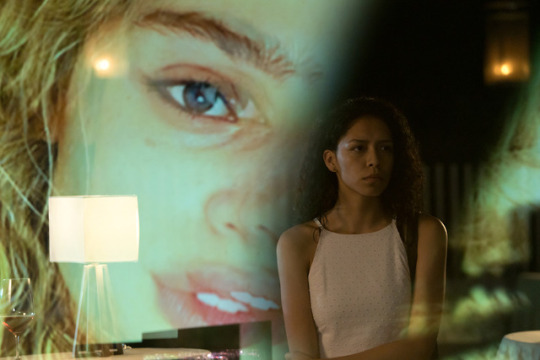





Chambers launches April 26 on Netflix. Here are first look images from the series.
#photos#series#netflix#netflix original series#chambers#chambers netflix#netflix chambers#sivan alyra rose#sasha yazzie#griffin powell-arcand#tj locklear#tony goldwyn#ben lefevre#marcus lavoi#big frank yazzie#frank yazzie#lilliya scarlett reid#becky lefevre#kyanna simone simpson#yvonne#uma thurman#nancy lefevre#first look
328 notes
·
View notes
Text
3 Yoga-Related Documentries on Netflix You Should Watch This Weekend
Yes, it is possible to integrate yoga into your must-watch queue. Who says sinking into your couch isn’t self-care?
Tony Goldwyn in Chambers on Netflix
Chambers
Scandal fans know actor Tony Goldwyn as the charming leader of the free world. But with the April release of Netflix’s Chambers, the formerly buttoned-up bossman has entered full-on crystal-toting territory. As mourning father Ben Lefevre, Goldwyn leans on Kundalini breathing practices and shirtless meditations to cope with the loss of his teenage daughter, Becky. The supernatural thriller unravels the mysterious circumstances behind Becky’s death and the paranormal visions that result when another girl receives her heart in an emergency transplant. Even if bone-chilling television isn’t your thing, you may still appreciate Lefevre’s commitment to sage burning.
Michael O’Neill's On Yoga: The Architecture of Peace
On Yoga: The Architecture of Peace
If you haven’t yet seen this 2017 documentary based on photographer Michael O’Neill’s book of the same name, it’s time. O’Neill’s decade-long photographic exploration into the practice styles of world-renowned yoga masters resulted in the 2015 tome, which contains 200 photographs of famed yogis such as B.K.S. Iyengar and designer Donna Karan. The film depicts O’Neill’s behind-the-lens efforts to capture a diverse array of practitioners and features appearances from commentators Deepak Chopra and Elena Brower.
See also Light on Iyengar
Maris Degener in I am Maris
I am Maris
Few stories of struggling with mental health prove to be as uplifting as I am Maris: Portrait of a Young Yogi, a documentary that follows 17-year-old Maris Degener as she’s gripped by chronic anxiety and a near-fatal eating disorder. By the time she’d reached middle school, what had begun as generalized dread escalated to full-blown panic attacks, later mani-festing as cutting, purging, and other forms of self-harm. Rather than focus on the protagonist’s trauma, the film, which hit Netflix after a year on the festival circuit, thoughtfully explores Degener’s psychological, physical, and spiritual healing through yoga.
After becoming a licensed instructor at the age of 16, Degener began blogging about her journey and made national headlines for her outspoken blog posts and social media captions that aimed to destigmatize mental health issues. The doc offers an insightful peek into life in the midst of a psychological battle, and highlights the potential for beauty after pain. Bring tissues.
See also 1 in 5 Adults Live with Mental Illness. These Yogis Are Breaking the Stigma
Q+A with Maris
Maris Degener was just 17 when she starred in I am Maris. Here, the 21-year-old vinyasa flow teacher dishes on inclusivity in the yoga community, representation in the media, and new frontiers in her post-film life.
YOGA JOURNAL: How does it feel to see the film’s message resonate with people all over the world?
Maris Degener: It felt risky to make a film about eating disorders that didn't romanticize this disease with dramatic weight-loss pictures or anything like that, and I am proud to have stood by my intentions. I believe in the film deeply, but I’m now more aware of the importance of representation than I was when the film was made. My positionality is complicated. On one hand, the film accurately paints a very privileged picture of my life: I grew up in an affluent community and I had full access to medical treatment. But it didn’t show all of me. It didn’t tell the story of my family’s immigration from Mexico. It didn’t show me struggling with my sexuality.
See also 7 Truths About Eating Disorders Every Yoga Teacher Needs to Know
YJ: How has this experience shaped your teaching?
MD: I came out as a queer person last year. Yoga is, in large part, based on satya, or living your truth. To teach this, I must be honest with myself and the world about who I am. The yoga community in the West is often very homogenous—or portrayed that way. If I can be open about who I am and how I’ve come to accept all of myself, that may help others feel safe and welcomed into the practice. It allows me to be a stronger voice for those often not represented in the community.
See also 10 Powerful (and Empowering) Poses for Pride
0 notes
Text
Chambers Brings Something Fresh to the Table
Netflix is quite notorious for introducing their “originals” that sometimes flop harder than a salmon on the shore. Sometimes we anticipate the premiere of a new show to binge watch and then end up royally disappointed. Nothing of the sort occurred when I finally started watching Chambers and thus unwrapped the psychological horror treat it is. Chambers is about Sasha Yazzie (Sivan Alyra Rose) who suffers an unexpected heart attack, undergoes an emergency transplant and becomes close to the family of her heart donor, the Lefevre’s.
From there it’s a spiral of bizarre occurrences that lead Sasha wanting to figure out how Becky Lefevre actually died.
Whenever there’s a woman as a lead for a horror movie or show – she’s often white and conventionally attractive. Despite the strides of having a woman as a lead at all, it doesn’t serve much in the way of representation. Chambers not only gives us a woman of color as a lead, but Sivan Alyra Rose is the first Native woman to star in a Netflix show. That in itself is progress. The progressiveness within the show is also a part of what’s so fresh. The further you get, the more you may understand what it all means. This isn’t just a show about a Native girl who is undergoing bizarre experiences. It’s also about the atrocities that rich white people get away with in the name of their (spiritual or otherwise) causes.
While the idea of someone becoming slowly possessed by another being or person has been done before, the subtext isn’t the same in this case. Women are often vessels for ‘unspeakable evil’ in horror as a genre, but this time the main character is a woman of color. Historically, the bodies of women of color have been used and discarded. It’s still the case to this very day so Chambers brings a realistic narrative to the table, where white spirituals not only manipulate but also give a Native woman no choice in her ‘destiny.’ Having horror movies explore narratives such as this is something new and fresh for the genre. It’s also showing progress in terms of what we can expect moving forward in the film world of horror.
Vanessa Maki is a queer writer, artist & other things.
She’s full of black girl magic & has no apologies for that. Her work has appeared in various places like Really System & others. She is also forthcoming in a variety of places. She’s founder/EIC of rose quartz magazine & is involved in other literary spaces as well.
Follow her twitter & visit her site.
0 notes